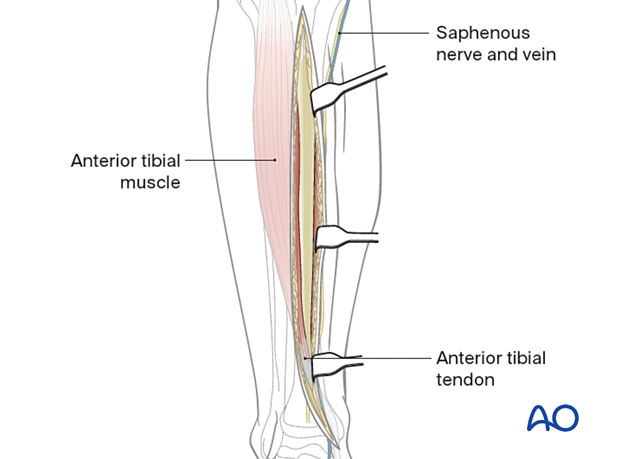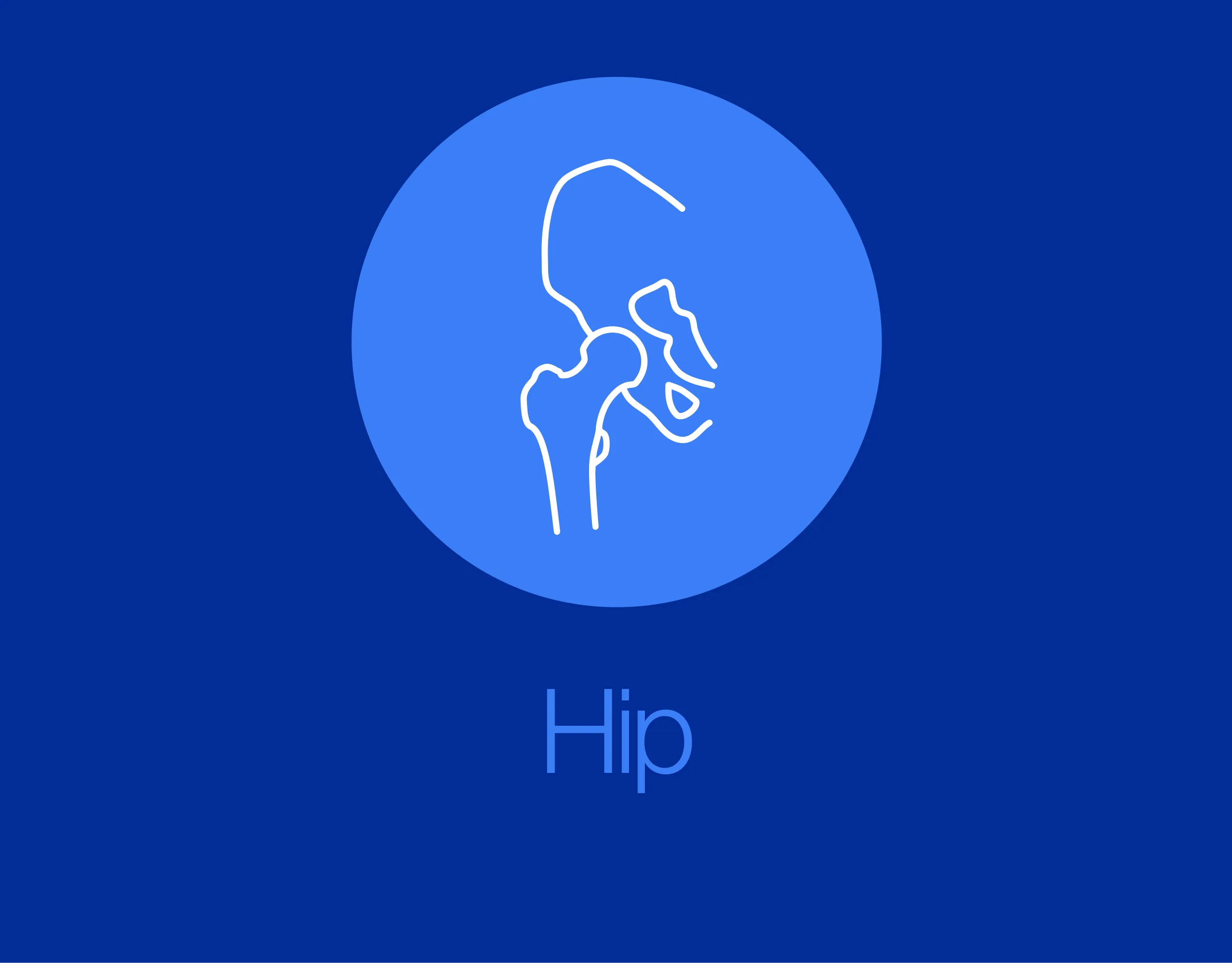Approach to the anteromedial surface of the tibial shaft
1. Indications
The anteromedial approach to the tibial shaft is through an incision placed just lateral to the anterior tibial crest.
Its most common use is for fractures of the distal third of the tibial shaft; however, it can be used to expose the entire anteromedial surface.
It is also useful for debridement and irrigation of open fractures when an incision on the injured subcutaneous surface is to be avoided.
This approach has the following advantages:
- It does not remove any muscle from the fracture fragments
- The relatively simple shape of this surface makes plate contouring easy with conventional plates, and especially easy with precontoured plates
This approach should not be used when the medial skin is compromised.
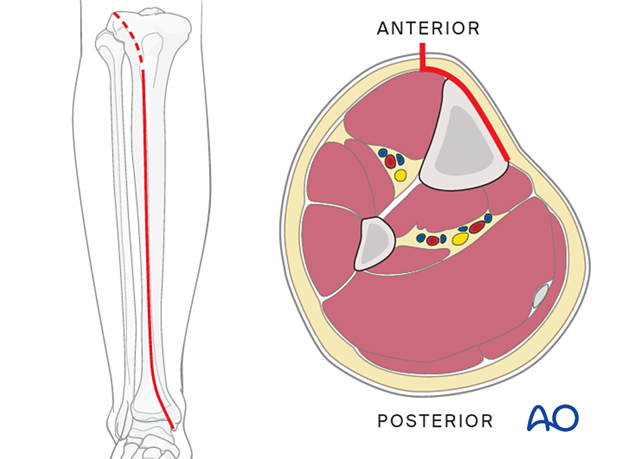
2. Anatomy
The lateral and posterior surfaces of the tibia are covered by muscle. The anteromedial surface has only a thin layer of subcutaneous tissue and skin. This surface provides less blood supply to the underlying bone.
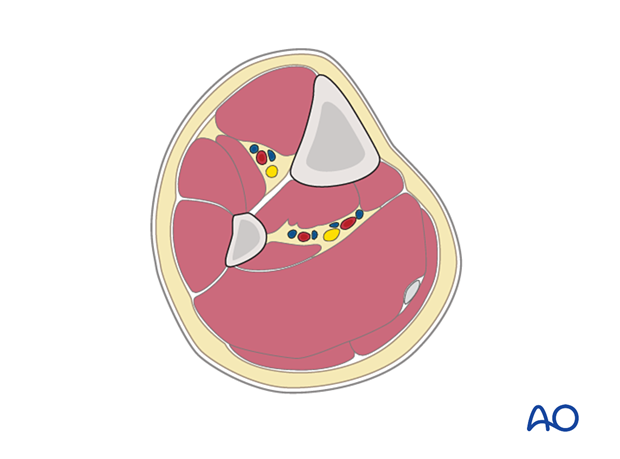
The lower leg has four compartments:
- Anterior
- Lateral
- Deep posterior
- Superficial posterior
The anterior compartment has three muscles, one main artery, and one nerve: the tibialis anterior, extensor hallucis longus, extensor digitorum longus, the anterior tibial artery, and the deep peroneal nerve.
The lateral compartment has two muscles and one nerve: the peroneus longus and brevis, and the superficial peroneal nerve.
The deep posterior compartment has three muscles, two arteries, and one nerve: the tibialis posterior, flexor hallucis longus and flexor digitorum longus, and the peroneal and posterior tibial arteries, as well as the tibial nerve.
The superficial posterior compartment has two muscles and one nerve: the gastrocnemius, the soleus, and the sural nerve.
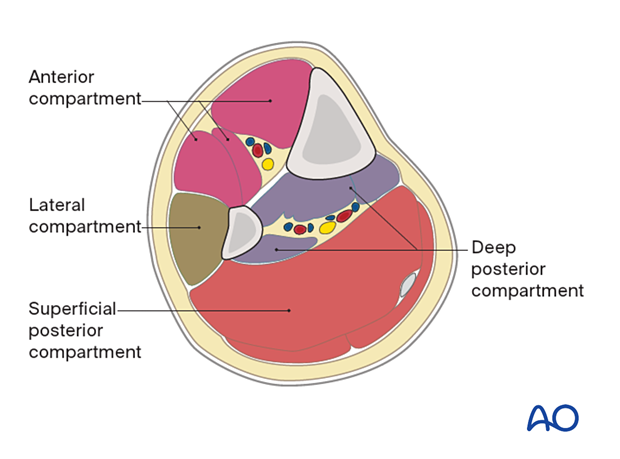
3. Skin incision
Approach the anteromedial surface through a longitudinal incision 1–2 cm lateral to the tibial crest. Distally, continue along the medial edge of the tibialis anterior in a gentle curve in the direction of the medial malleolus.
The deep dissection should stay superficial to the fascia layer of the anterior compartment.
The length of the incision depends on the planned plate length.

Take care not to compromise the saphenous nerve and vein, which are at risk at the distal extent of the approach.
Entrance into the anterior tibial tendon sheath should be avoided, as this can cause unwanted adhesions.
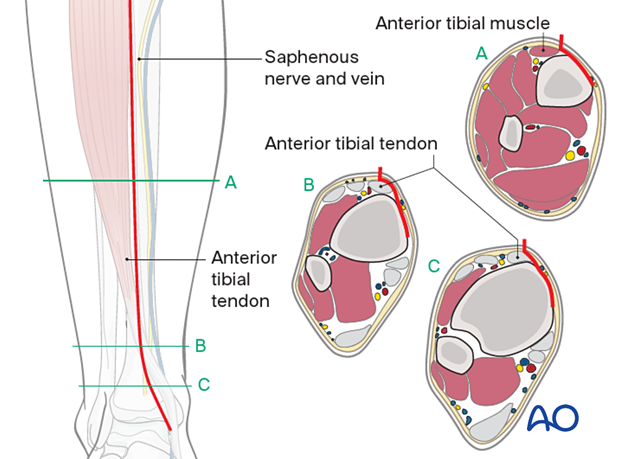
4. Dissection
Full-thickness skin and subcutaneous tissue flaps are then mobilized in a medial direction. In this way, the anteromedial aspect of the tibia is directly exposed. The periosteum is left intact or minimally reflected from the fracture edges, if necessary, for a direct anatomical reduction.
